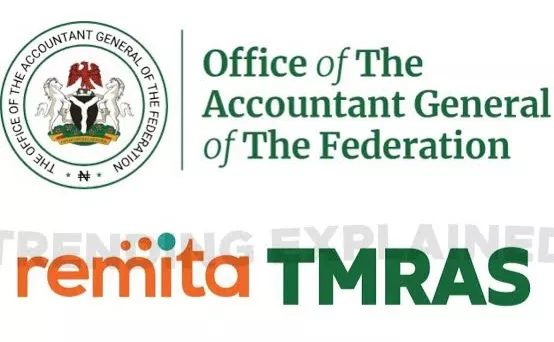Financial institutions have become highly dependent on technology as every transaction is seamlessly conducted at the click of a button, especially in banking systems. With vast amounts of sensitive fiscal information converging and exchanging through interconnected networks, a single breach can reverberate across economies and maim various industries.
The stakes are high — the risks are real — and the call for a robust defense against such damages is non-negotiable. Hence, the need for data security. This ironclad defense mechanism is designed to safeguard sensitive information within the banking ecosystem. It encompasses a myriad of strategies and protocols meticulously crafted to thwart unauthorized access, prevent data breaches, and fortify digital barriers against the ceaseless evolution of cyber threats.
This no-nonsense guide will explore the essential strategies to fortify data security walls within banking systems. From encryption protocols to adopting innovations, this article will provide a comprehensive roadmap to enhanced data security and ensure robust protection of financial information.
Contents
Implement Encryption Protocols and Monitor Access Controls
Implementing encryption protocols and vigilant access controls stand as crucial strategies in fortifying banking systems and fighting against cyber threats, including the pervasive menace of malware attacks.
Encryption protocols serve as the firm guardians of sensitive data and render such information indecipherable to unauthorized entities.
One such example of an encryption protocol is the Secure Sockets Layer (SSL) is another protocol, which confidential information by safeguarding the channels that data passes through. Banking systems should also employ the Advanced Encryption Standard (AES) algorithm to protect sensitive data at rest.
Complementing encryption protocols is robust access controls, which stand as the gatekeepers of confidential data that limit entry only to those with explicit authorization. Such a stringent restriction helps mitigate the risks associated with malware attacks seeking to exploit vulnerabilities in the system.
Best practices for access monitoring involve real-time audits, multi-factor authentication, and regular reviews of user privileges that create a dynamic defense against potential threats.
Employ Threat Detection and Secure Data Storage Practices
Enhancing data security in banking systems necessitates a proactive stance, and two key components of this approach involve implementing robust threat detection mechanisms and secure data storage practices.
Threat detection serves as a preemptive strike against potential security breaches, leveraging advanced algorithms and artificial intelligence to identify anomalous patterns and activities. This active approach ensures that any incursion is met with an immediate and effective countermeasure — thereby minimizing potential damage.
Ideal approaches for this strategy include real-time monitoring, anomaly detection algorithms, and incident response plans.
Equally vital is employing secure data storage methods, with a nod to the rising prominence of cloud computing. Robust encryption, data segmentation, and stringent access controls within cloud environments contribute to a fortified defense against unauthorized access and potential data compromise.
Ensure Regulatory Compliance
Navigating the complex landscape of data security in banking systems requires a keen understanding of key regulations and compliance standards. In the financial sector, adherence to regulations such as the Payment Card Industry Data Security Standard (PCI DSS), the Gramm-Leach-Bliley Act (GLBA), and the Sarbanes-Oxley Act (SOX) is hard-set to sacrosanct to protect the interest of all stakeholders.
Notably, SOC 2 compliance — with a focus on the SOC 2 trust principles — underlines the imperative of ensuring security and privacy.
Aligning data security practices with these regulatory requirements fosters accountability while instilling confidence among stakeholders. To ensure ongoing compliance and mitigate legal risks, banks must implement robust internal monitoring processes, conduct regular audits, and stay abreast of evolving regulatory landscapes.
This proactive approach not only safeguards against potential breaches but also positions banking systems as bastions of trust and compliance in the eyes of both regulators and customers alike.
Provide Comprehensive Employee Training
Recognizing the pivotal role of the human element is often an underestimated aspect of data security. However, it is the key to fortifying banking systems against potential vulnerabilities. Educating banking staff on cybersecurity best practices cannot be overlooked, especially in the dynamic landscape of cyber threats.
Effective training programs go beyond routine protocols. Instead, these initiatives should empower employees to identify and respond to potential threats, ultimately serving as the first line of defense against evolving risks.
This involves imparting technical knowledge and fostering a security-conscious culture where every employee understands their role in safeguarding data. The ultimate goal is to create a workforce equipped to identify and thwart potential risks, thereby protecting both the institution and its customers from banking scams.
Keep Tabs on Emerging Trends and Innovations
As the digital landscape continues to evolve, embracing emerging trends and innovations becomes imperative for enhancing data security within banking systems. That’s because these advancements hold the potential to significantly impact the security paradigms of banking systems as they introduce novel solutions to combat rising cyber threats.
Exploring emerging technologies such as blockchain and artificial intelligence (AI) unveils new possibilities for fortifying data security. Blockchain’s decentralized and tamper-resistant nature, coupled with AI’s ability to analyze vast datasets for anomalies, presents promising avenues.
Staying updated on the latest trends is also crucial, and recommendations extend beyond mere awareness. Banking systems must actively incorporate relevant technologies into their security frameworks. Doing so enables financial institutions to uphold their defenses against contemporary threats while also positioning themselves at the forefront of cybersecurity.
Conclusion
Data security serves as an unwavering sentinel in the ever-shifting realm of modern banking, safeguarding the trust of clients and the integrity of financial systems. The intricately interconnected strategies explored in this guide — encryption protocols, access controls, threat detection, regulatory compliance, employee training, and embracing innovations — form a cohesive defense against ever-evolving threats.
Still, there is a loud call for continuous improvement. Adaptation is the currency of resilience, and the commitment to refining and reinforcing these measures ensures that banking systems stand strong against the relentless tide of cyber challenges.










